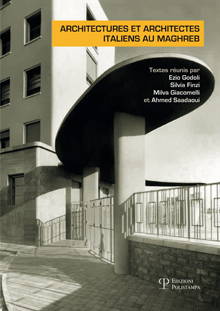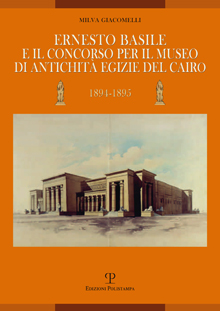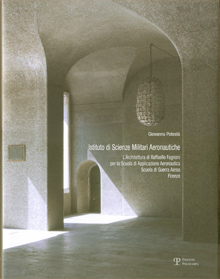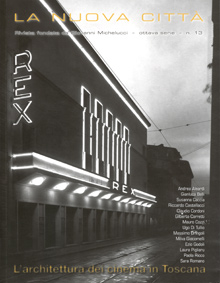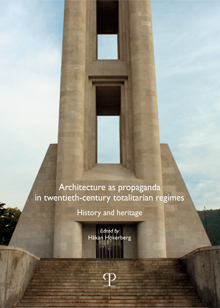
It is
well known that architecture has the potential to support and promote
ideological propaganda. In the totalitarian regimes of twentieth-century
Europe, political leaders clearly understood that potential and knew how to
exploit it. As a consequence, architecture prospered under totalitarian rule.
When the regimes eventually collapsed, they left a rich architectural legacy,
which remains today as an evident and sometimes awkward part of the urban
landscape. This conference volume explores how prominent architects conveyed
the dominant political programmes of totalitarian regimes through buildings,
monuments and urban planning. Scholars from a range of academic backgrounds
examine the significance of difficult architectural heritage with regards to
national identity and historical understanding – whether this heritage is
acknowledged or ignored. Examples illustrate different approaches to the
management of ideologically controversial heritage, reflecting the varying
ambitions of former totalitarian nations to confront their dark past.
Håkan Hökerberg, Introduction
Stefan Berger, National tradition! What national tradition? Historiographical
debates on fascism in Italy and Germany from 1945 to the post-Cold War period -
Antonello Alici, Giuseppe Pagano and Casabella. In defence
of modern Italian architecture - Hannah Malone, Marcello
Piacentini: a case of controversial heritage - Paolo Nicoloso, The fascist
memory of the war and its legacy. Two cases: the Redipuglia War Memorial and
the Ara Pacis of Medea - Raffaele Giannantonio, Fascism/Urbanism:
Town, New-Town, Non-Town - Giorgio Ciucci, The Italian,
Soviet Union and German pavilions in international Exhibitions 1925-1939 - Harald
Bodenschatz, Berlin
Mitte: the product of two dictatorships - Manuel Blanco, The
reconstruction of Spain in the post-war period. The Dirección General de
Regiones Devastadas - Sonja Ifko, Slovenia in a Yugoslavian context:
practicing architecture on the third side of the Cold War - Patrick
Leech, The
anxieties of dissonant heritage: ATRIUM and the architectural legacy of regimes
in local and European perspectives - Sharon Macdonald, Endorsement
effects and warning potentials: Architecture from totalitarian eras as heritage
- Valerie Higgins, Hidden in plain sight: the impact of Rome’s fascist past on
contemporary heritage management - Håkan Hökerberg, The past in
the present: difficult heritage in the contemporary context - Max
Page, The
Arc of Memory and the Arc of Justice: How memorials to European fascism matter
Notes on
contributors
It is
well known that architecture has the potential to support and promote
ideological propaganda. In the totalitarian regimes of twentieth-century
Europe, political leaders clearly understood that potential and knew how to
exploit it. As a consequence, architecture prospered under totalitarian rule.
When the regimes eventually collapsed, they left a rich architectural legacy,
which remains today as an evident and sometimes awkward part of the urban
landscape. This conference volume explores how prominent architects conveyed
the dominant political programmes of totalitarian regimes through buildings,
monuments and urban planning. Scholars from a range of academic backgrounds
examine the significance of difficult architectural heritage with regards to
national identity and historical understanding – whether this heritage is
acknowledged or ignored. Examples illustrate different approaches to the
management of ideologically controversial heritage, reflecting the varying
ambitions of former totalitarian nations to confront their dark past.
Håkan Hökerberg, Introduction
Stefan Berger, National tradition! What national tradition? Historiographical
debates on fascism in Italy and Germany from 1945 to the post-Cold War period -
Antonello Alici, Giuseppe Pagano and Casabella. In defence
of modern Italian architecture - Hannah Malone, Marcello
Piacentini: a case of controversial heritage - Paolo Nicoloso, The fascist
memory of the war and its legacy. Two cases: the Redipuglia War Memorial and
the Ara Pacis of Medea - Raffaele Giannantonio, Fascism/Urbanism:
Town, New-Town, Non-Town - Giorgio Ciucci, The Italian,
Soviet Union and German pavilions in international Exhibitions 1925-1939 - Harald
Bodenschatz, Berlin
Mitte: the product of two dictatorships - Manuel Blanco, The
reconstruction of Spain in the post-war period. The Dirección General de
Regiones Devastadas - Sonja Ifko, Slovenia in a Yugoslavian context:
practicing architecture on the third side of the Cold War - Patrick
Leech, The
anxieties of dissonant heritage: ATRIUM and the architectural legacy of regimes
in local and European perspectives - Sharon Macdonald, Endorsement
effects and warning potentials: Architecture from totalitarian eras as heritage
- Valerie Higgins, Hidden in plain sight: the impact of Rome’s fascist past on
contemporary heritage management - Håkan Hökerberg, The past in
the present: difficult heritage in the contemporary context - Max
Page, The
Arc of Memory and the Arc of Justice: How memorials to European fascism matter
Notes on
contributors
Polistampa, 2018
A cura di:
Pagine: 352
Caratteristiche: ill. col., br.
Formato: 17x24
ISBN: 978-88-596-1835-5
Settori:
